Sternocleidomastoid Muscle Pain
When you feel pain on one side and the front of the neck which pain is like a trigger point pain, it is suggested to be sternocleidomastoid muscle pain.
Also, feel neck tenderness and headaches and also radiate this pain.
Sternocleidomastoid (SCM) muscle pain in the neck mainly occurs due to muscle tightness or overuse of repeated Neck motions. It can also be associated with certain health conditions, such as asthma and pneumonia.
What is sternocleidomastoid muscle pain?
The sternocleidomastoid muscle is a large muscle that is situated near the front of the neck.
Pain in this muscle is due to many reasons like as poor posture and lifting heavy things.
You feel pain like trigger points pain and radiate pain.
Also, feel nausea & dizziness in this muscle pain.
This pain is relieved by life changes, pain relief medicines, and physiotherapy treatment.
What is the Anatomy of the sternocleidomastoid muscle?
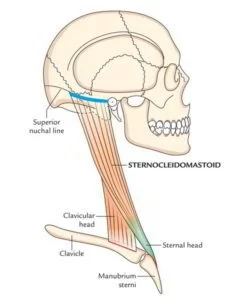
The sternocleidomastoid muscle is a superficial muscle, which indicates this muscle is just under the skin, not deep in the neck.
It is connected to the mastoid process, and this mastoid process is a part of the bone which is situated just behind the jaw and under the ear.
Then this muscle stretches down the length of the neck and the end of this muscle is where the collarbone and breastbone are linked to each other.
This sternocleidomastoid muscle helps with the activity and balance of the head trustee Source.
This muscle is visible when you move the head from side to side.
The function of this muscle is the rotation of the head to the other side and obliquely rotating the head and It also bends the neck.
Causes of sternocleidomastoid muscle pain
Most people with sternocleidomastoid muscle pain are developed to slow due to a combination of lifestyle problems.
So Poor posture is a possible reason for sternocleidomastoid muscle pain.
If happen to tightness in another portion of the body it is produced referred pain in the SCM.
If the patient presents with any chronic health diseases, like asthma, acute respiratory infections, sinusitis, pneumonia, or bronchitis.
Other causes of this sternocleidomastoid muscle pain include:
- If carrying a heavy thing, like a child or backpack, in the wrong position.
- Poor posture, for instance, when you spend long days crouched over the position of a computer and straining the neck to reach things in the garden.
- If occur to tension and injury in other muscles of the shoulders, neck, and back muscle is caused this muscle pain.
- When you hold a phone for a long time between the ear and shoulder joint.
- If you sleep in an awkward position for the whole night.
- If you use an uncomfortable pillow during sleeping.
- If you do shallow chest breathing is caused to SCM pain.
- If you wear to tight shirt collar and tie.
Less often, some other aspects which are become to cause sternocleidomastoid muscle pain include:
Trauma:
A fall, a blow to the side of the neck, and a car accident may injure the neck muscles, which is provided to result in strains, sprains, and other damages.
Arthritis:
If happen to Arthritis in the spine is referred to as a pain in the sternocleidomastoid muscle.
Arthritis also alters posture and moves the head in a way that increases the risk of injury in the muscle.
Myofascial pain syndrome:
The myofascial pain syndrome trigger issues in a muscle.
Symptoms of the sternocleidomastoid muscle pain
- Commonly, with an injured sternocleidomastoid muscle, you are not feeling pain at the location of the injury but you feel the pain which is radiate the other regions of the body.
- You feel the ear pain and also present soreness, aching, and a sense of fullness in the ear.
- Also, feel the pain in the face and the front of the head or beyond the eyes
- The feeling of throat pain during swallowing
- feel too problem in holding up the head
- Dizziness and nausea
- Also, feel visible disturbances like as blurred vision and light appearing dimmed
- Tingling in the face, head, and neck
- Feel the headaches
- Pain in the sinuses or nose
- Feel neck stiffness including problems rotating the head from side to side.
- Also, feel stiffness and tenderness in some points of the site of pain.
- In this case, A person is feel pain which is radiating to other areas when pressing the trigger points of the muscle.
Diagnosis of the sternocleidomastoid muscle:
- A doctor begins the diagnosis of sternocleidomastoid damage by following the assessment.
- First, ask the patient some questions about the signs and any recent medical records and movements.
- This aspect is essential for the doctor because depending on the all symptoms, the doctor tests to know about the reason for the injury.
- During the observation, the part doctor observes the swelling or redness and any other skin differences in the site of pain.
- On the palpation, place palpates to swelling, and spams around the site of pain.
- On the examination check the range of motion ( ROM ) and strength of the muscle.
- In some circumstances, Imaging scans are required to diagnose details about the muscles and surrounding structures.
- An ultrasound is helpful to doctor for diagnosing trauma in the sternocleidomastoid muscle when an X-ray is ruled out the damaged bones.
Treatment for sternocleidomastoid muscle pain
RICE Principle
In the initial phase of treatment follow to RICE principle and releases pain.
- R: rest – When you feel pain doctor advises you to rest for some time and avoid movements which are increased pain.
- I: ice – For release to pain used ice on the area of pain for 15 to 20 minutes, you are also used to ice packs and frozen peas for release to pain and swellings.
- C: compression – Used to compression bandage and cervical collar for release to pain and swellings.
- E: elevation – In this muscle elevation is not possible because, for this muscle when to neck is elevated, it increases pain in the muscle.
Pain medication:
Relieve the pain doctor’s suggestion to pain relief medicines like non-steroidal anti-inflammatory drugs ( NSAID ) medicines including ibuprofen and naproxen.
You can also use volini gel and diclofenac gel reduce to pain which is used at the site of muscle pain.
Do the Lifestyle changes:
When your posture is bad and carrying heavy things it produces this muscle pain.
When addressing this issue control the pain from getting worse.
Use the pillow for support.
Surgery:
When the other remedies fail, the doctor suggests to you surgery mostly if happens to sternocleidomastoid muscle ruptures and tears.
Heat and cold packs:
Hot and cold treatments are too simple options for a treat the pain at home.
Both treatments are helping to reduce swelling, reduce pain and relax muscles.
Apply on the heating pad and ice pack which is applied to the affected region for 10 minutes a few times throughout the day.
When you alternate between the two therapies but end with this therapy cold treatment.
Physiotherapy treatment for sternocleidomastoid muscle pain
The physiotherapy treatment contains massage, electrotherapy, exercise, stretching, & yoga, which are used to reduce muscle pain, swellings, spasms, tightness, and weakness of the neck muscle.
Massage:
Massage is also used at the site of pain to release muscle tension and stress.
This massage is used at the site of pain with the help of oil and powder.
This massage is applied onetime in a week.
But this massage therapy is provided to results for a short time.
You are even doing the self-massage on the head, neck, and shoulder joints for 10 minutes every day.
Electrotherapy
The electrotherapy treatment includes SWD, TENS, IFT, and US machines to remove the pain and swelling.
- [ US ] ultrasound therapy: Ultrasound therapy is used to release swellings & tenderness in the region of pain
- [ SWD ] short wave diathermy: short wave diathermy is used to reduce pain.
- [ IFT ] Interferential Therapy and [ TENS ] Transcutaneous electrical nerve stimulation on the site of pain.
- This machine is used for 10 minutes at the site of muscle pain for pain release.
Exercise for the sternocleidomastoid muscle pain
This exercise is useful to you reduce pain and weakness:
- Cervical flexion
- Cervical side flexion
- Cervical rotation
- Chin tucks
- Head tilts
Cervical flexion:
The patient’s position is to sit upright on a chair for the exercise.
After then slowly tilts the head forward and back again.
Repeat this cervical flexion motion several times means 10 times in 1 session, and keep this exercise steady to avoid additional strain.
Perform this exercise in 3 sessions every day.
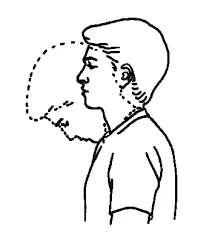
Cervical side flexion:
The patient’s position is to sit upright on a chair for the exercise, and slowly tilt the head to one side and then the other.
Repeat this exercise 20 times in 1 session, but in a controlled manner.
Perform this exercise in 3 sessions every day.
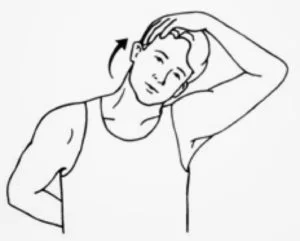
Cervical rotation:
The patient’s position is to sit upright on a chair for the exercise, and then slowly rotate the head to face one side and then the other.
Repeat this exercise 20 times in 1 session every day turning the head as far as is relaxing.
Perform this exercise in 3 sessions every day.
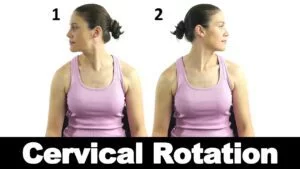
Chin tucks:
The patient’s position is to sit upright on a chair for the exercise, then slowly draw the chin inward while keeping the head straight.
perform the repetitions 20 in 1 session but steadily avoid straining the neck also.
Do this exercise in 3 sessions every day.

Head tilts
the patient’s position is to sit and stand position to face forward, and then exhale as you slowly tilt the right ear down toward the shoulder joint.
Use the right hand to give gentle pressure to the head to deepen the stretch.
Maintain this position for a few breaths, and then feel the stretch on the side of the neck down to the collarbone.
On an inhale, back to the starting position, and repeat this exercise on the other side.
Do this exercise with 10 head tilts on both sides.
Stretching for the sternocleidomastoid muscle pain
The patient has located the Sternocleidomastoid muscle and lightly pinch the muscle down with the 2 fingers then Right where the clavicle is.
The SCM situated just turns the head to one side and brings the head forward.
So that the SCM muscle is pop out, and this SCM muscle is run from the Clavicle to the Mastoid process.
After then place the other hand on the other side of the head and bring the ear down to the shoulder joint.
Make sure to maintain holding the SCM muscle on the clavicle with the other hand which increases the stretch.
Then tilt the head up to look at the roof, and use the hand to pull the head back and side to increase this stretch.
Maintain this stretching exercise for at least 30 seconds on both sides.
Then Breathe normally as you do this stretch, and do this by stretching both sides of the neck, but Do not push into the pain.
If you feel the pain, then relax off the stretching.
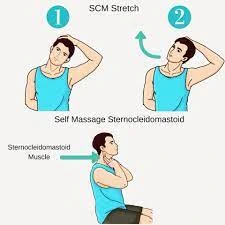
Yoga for the Sternocleidomastoid muscle pain
This yoga posture is useful for the stretch and strengthening the muscle:
- Revolved Triangle
- Upward Plank
Revolved Triangle
The patient’s position is standing with the feet about 4 feet apart, and facing the right toes forward and left toes out at a slight angle.
Square the hip joint and face forward in the same direction the right toes are pointing.
Raise the arms at the sides so that parallel to the ground.
And then slowly hinge at the hip joint to fold forward, stopping when the torso is parallel to the ground.
Bring the left hand toward to leg, the ground, and a block, wherever you reach.
Extend the right arm straight up with the palm facing away from the body, and shift the gaze to look up toward the right thumb, then exhale to turn the neck to look down at the ground.
Inhale as they back their gaze upward.
Must be held the rest of the body stable and continue these neck rotations to stay in the posture for up to 1 minute.
Then do to yoga pose on the other side.

Upward Plank
The patient’s position is to come into a seated position with the legs extended in front of you, and then press the palms into the floor alongside the hip joint.
Raise the hip joint and bring the feet under the knees.
Deepen the pose by straightening the legs, opening the chest, and letting the head drop back.
Maintain this yoga position for up to 20 seconds, and do this pose up to 3 times every day.

FAQ
Can sternocleidomastoid muscle pain be cured?
The sternocleidomastoid is the overall muscle on both sides of the neck. If it is tense or has trigger points, it can trigger pain in the head, ear, eye & face. Fortunately, it is possible to reduce the pain with a self-massage.
How long can sternocleidomastoid muscle pain last?
These facial sensations were often attended by a sensation of dizziness, throat pain upon swallowing, jerking of the left eyelid, & extreme lacrimation on the same side. She described these symptoms as intermittent, lasting from minutes to a few hours at a time, with a frequency of 3 to 12 episodes every week.
What is the reason for Sternocleidomastoid muscle pain?
Causes of SCM pain can include chronic health disorders, such as asthma, and acute respiratory infections, such as sinusitis, bronchitis, pneumonia, and the flu. Other causes of SCM pain include damages such as whiplash or falls. overhead work such as painting, carpentry, and hanging curtains.
What does Sternocleidomastoid muscle pain feel like?
Patients with criticisms of ear pain or fullness could have Sternocleidomastoid (SCM) muscle pain. Sternocleidomastoid (SCM) muscle pain generally brings complaints of dizziness or sudden hearing loss, headache, or jaw pain, even when everything occurs to be normal.


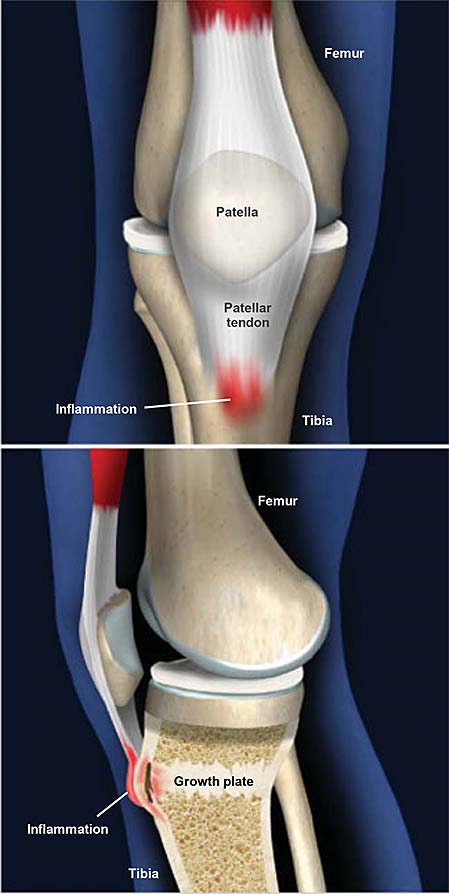
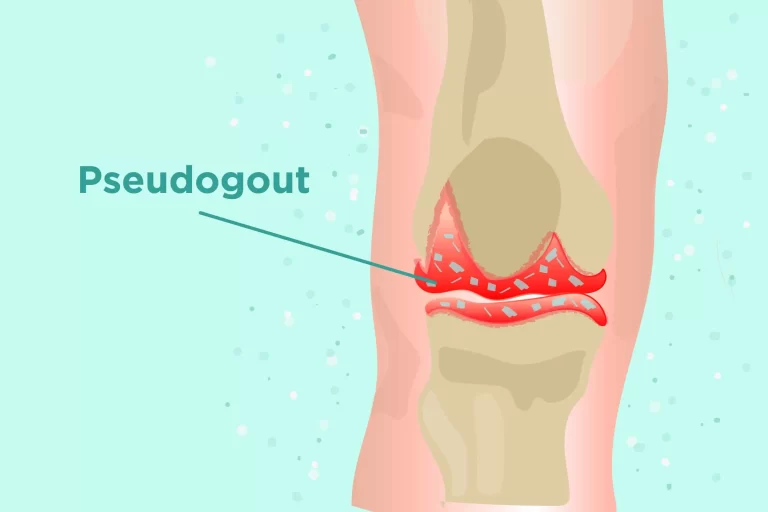
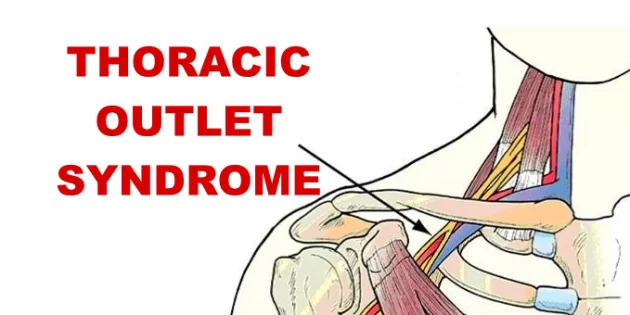
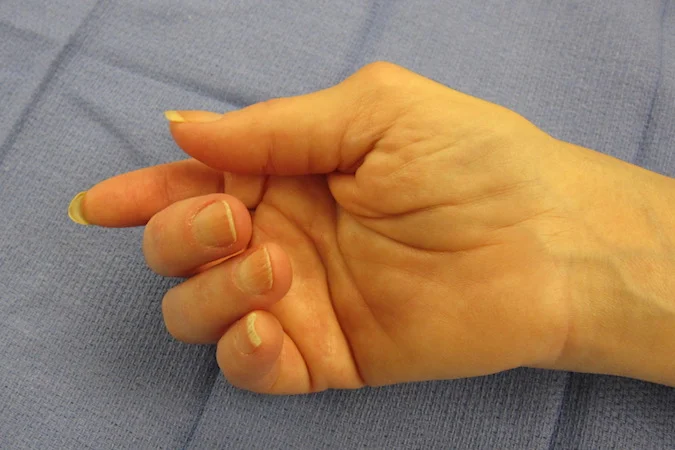
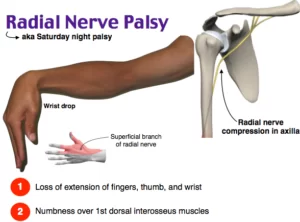
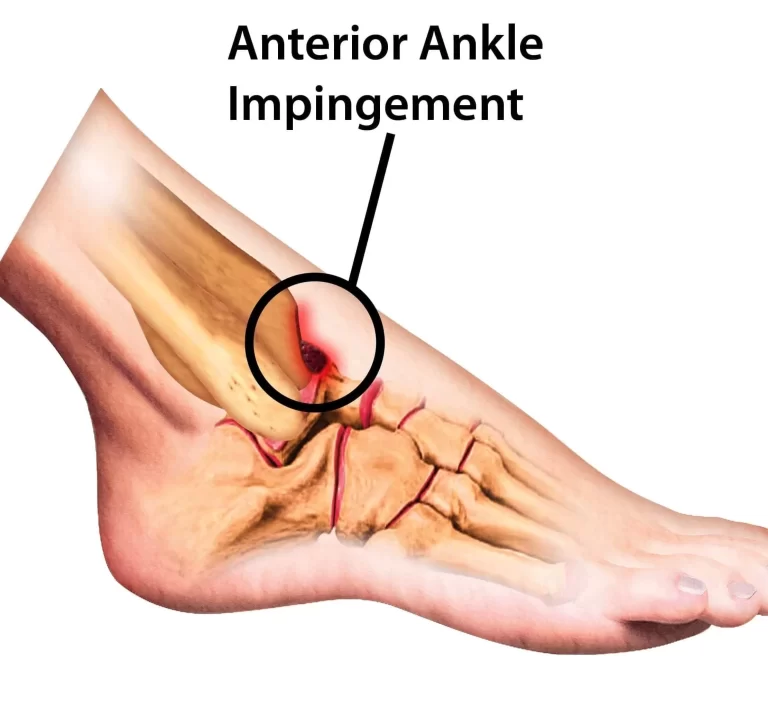
One Comment